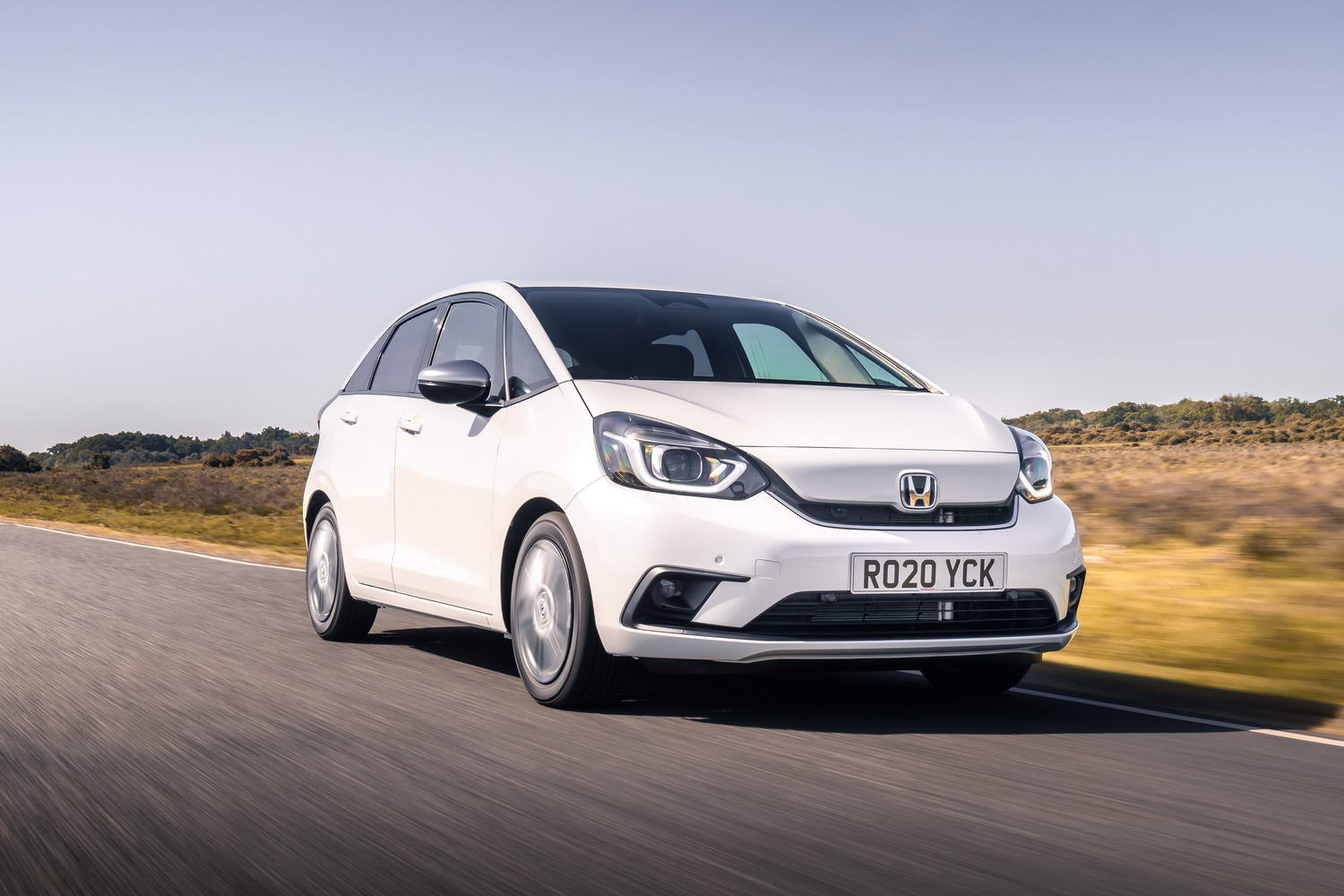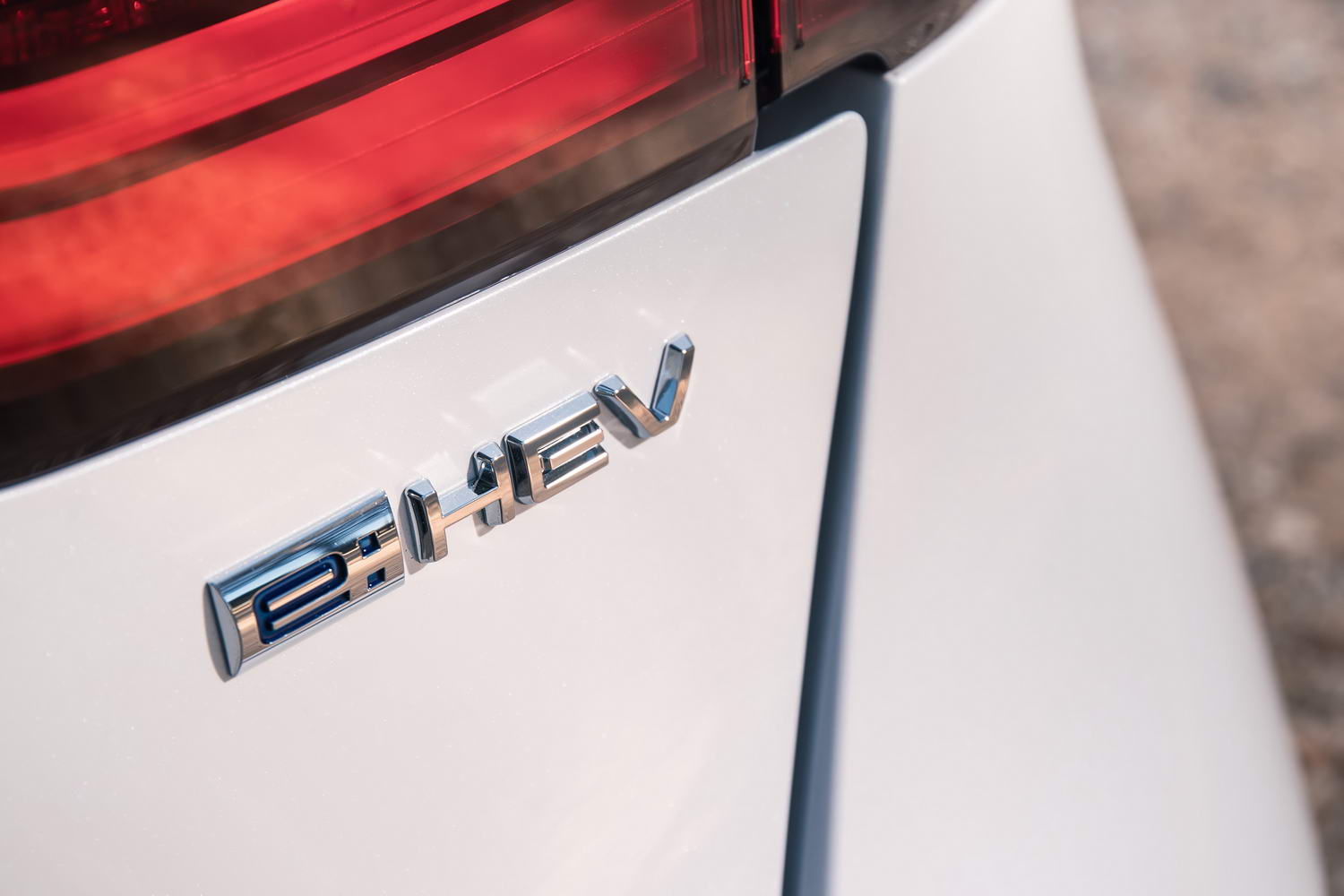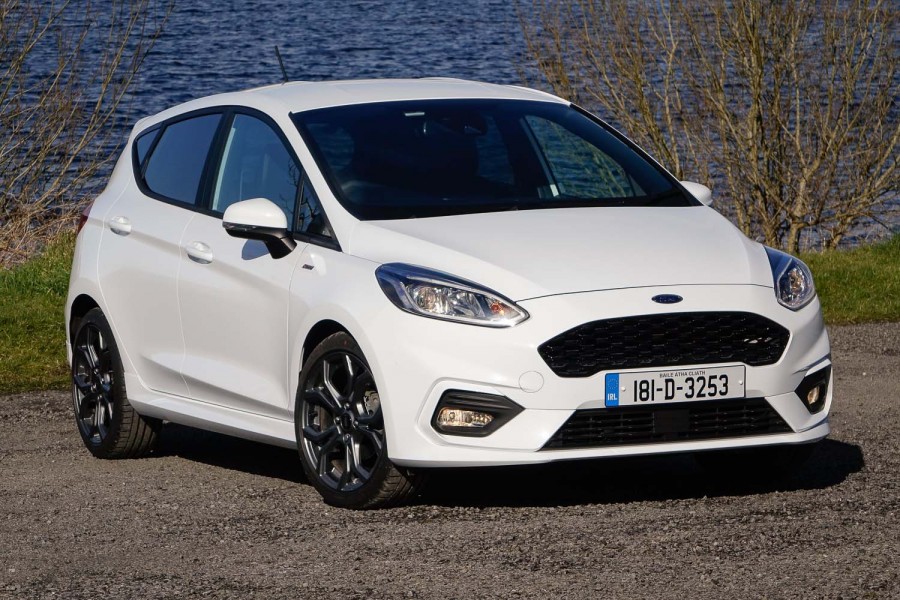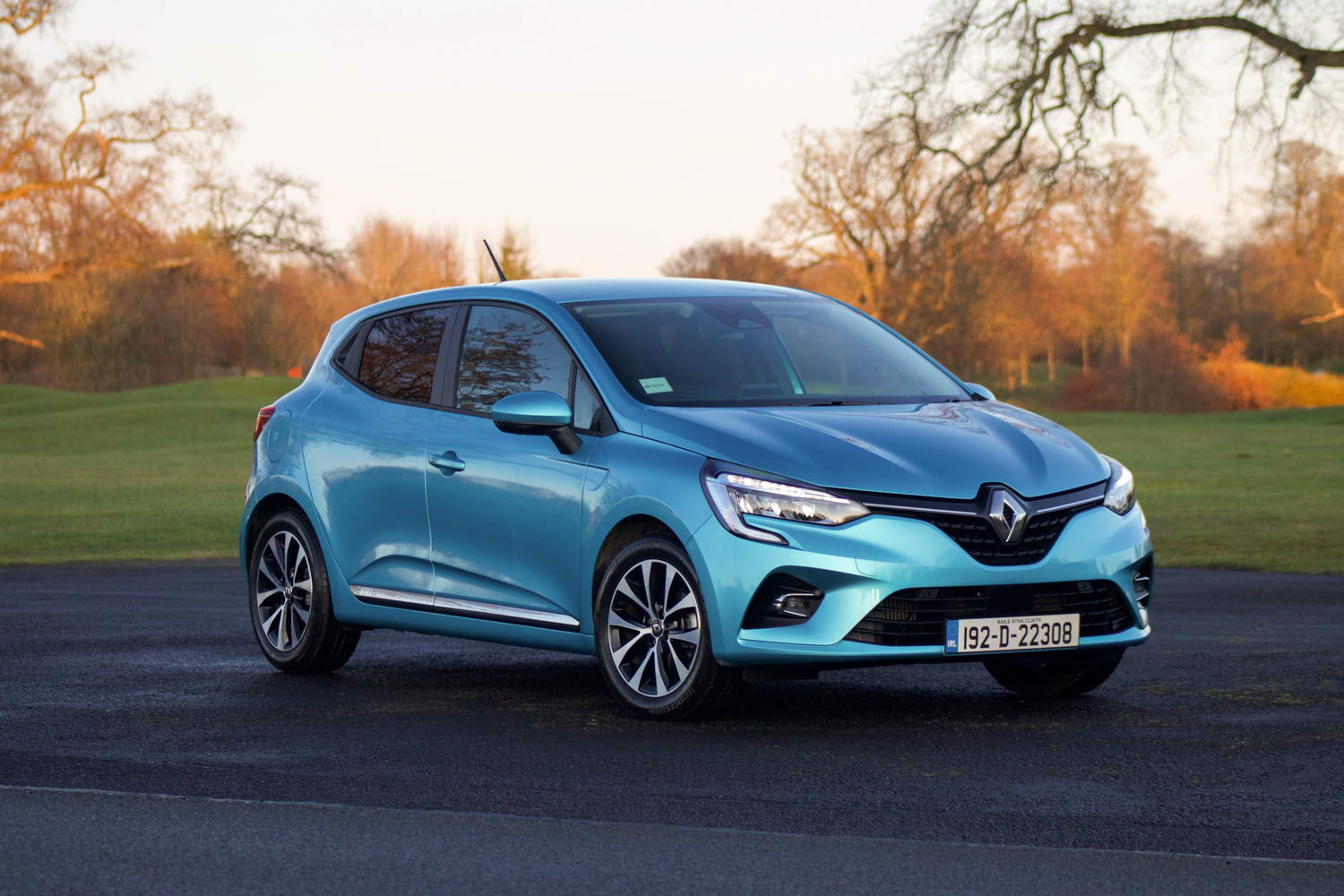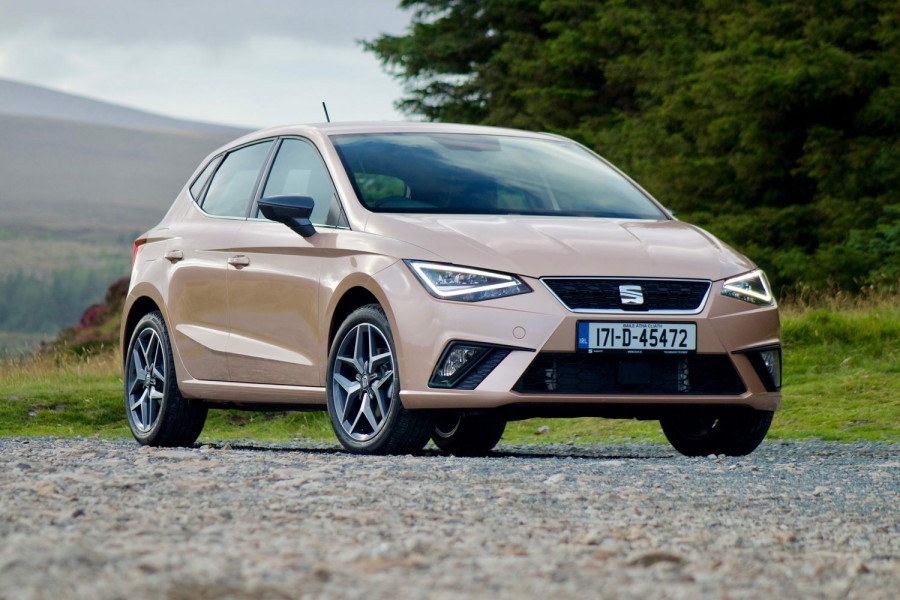Honda's fourth attempt at the Jazz supermini tries to channel some of the goodness of the Honda e into the B-segment hatchback. The good news is that it seems to have worked - the Jazz Mk4 is a quality, refined and likeable piece of kit.
In the metal
This latest Honda Jazz blends some of the 'monobox' styling of its three predecessors with that sort of smoothed-off, clean-surfaces appearance that seems to be the hallmark of future-gazing hybrid and electric cars in the 2020s. To an extent, this has worked, because the new Jazz is the most appealing yet in terms of looks. True, that might sound like it is clearing a pretty low bar, given Honda's supermini has always been seen as a shrunken MPV-alike favoured by a, um, more chronologically experienced clientele, but while we're not as enamoured with the Jazz Mk4 as we are with the Honda e (and how could we be?!), it remains a pleasantly attractive little car.
One of the major changes to the front of the Jazz relates to the windscreen and the A-pillars, the latter of which have been made much thinner by clever re-engineering to the crash structure beneath. This, in turn, leads to a vast front glasshouse with a 90-degree field of vision and it is this aspect that dominates your consideration of the interior. Simply sitting at the Jazz's funky little two-spoke steering wheel and looking out, you feel like you are in a much larger vehicle than you actually are. It gives a sense of airiness and solidity that isn't let down by the rest of the finishing - while the dash top and door cards are made of fairly hard, brittle plastics, elsewhere Honda has made big efforts in making the major touchpoints (steering wheel, gear lever, column stalks, switchgear) have a nice tactility, while the remarkably improved infotainment presented on a nine-inch central touchscreen is another major plus.
Indeed, what with this crisper mapping and the Jazz's sharp seven-inch TFT instrument cluster, this feels like a cutting-edge and high-quality cabin that can stand comparison with the best in the segment. Not only that, but it's still the highly practical Honda interior - the Jazz Mk4 retains its centrally mounted fuel tank, so the 'Magic Seats' are preserved in the back of the car, there's acres of space within for a vehicle of this road footprint, and the boot is a decent size with all seats in use and almost van-like with the second row folded down.
Driving it
While not terrifically interesting in the corners, the Jazz somehow conveys the air of having a very well-sorted chassis. The weighting of its major controls, particularly the steering, is pretty much just-so for this class and the Honda presents little in the way of understeer or comical body lean. So when you've got the little Jazz clipping along at a decent pace, it feels smooth and unflustered, rather than out of its depth.
However, buyers don't pick a Honda Jazz e:HEV because they want thrilling cornering attributes. This car needs to be easy to drive and comfortable, and on these two scores it absolutely aces its brief. The e:HEV powertrain, which is the only one offered in the Jazz Mk4, and is a driveline that starts an 'e:' naming convention we'll see on a lot of future Hondas, is an evolution of the Intelligent Multi-Mode Drive (i-MMD) in the CR-V Hybrid, only with a 1.5-litre Atkinson-cycle i-VTEC four-cylinder petrol engine replacing the larger SUV's 2.0-litre unit. But the Jazz has the same two electric motors, one for energy generation and one for propulsion, and in only one of its three drive modes is the combustion engine actually turning the front wheels through the single-speed fixed reduction-gear eCVT (electronically Continuously Variable Transmission).
Using a lot of brake energy recuperation, this system allows the Jazz to run in near-silent, pure electric mode far more than you'd give it credit for. In fact, on a reasonably varied 110km test route including urban driving, motorways and fast-flowing country roads, the Jazz easily turned in more than 60mpg (4.7 litres/100km) without any sort of concession to fuel-saving driving tactics. Better still, the eCVT mimics gearshifts as if it were a multi-cogged automatic, so while the 1.5-litre engine - which is a silky, quiet little peach up to about 3,500rpm - can sound a little strained when it is being asked to rev right out, you don't get any of that hideous, histrionic 'mooing' that you sometimes do from other CVTs.
This drivetrain refinement only adds to the Jazz's exceptional ride comfort and noise suppression. While the damping on the car lacks a little bit of outright vertical control at times, occasionally letting the Honda pogo slightly over washboard road surfaces, for most of the time you'll think you're in a D-segment saloon car, so civilised is the Jazz's comportment. And this was another brief of the design team: to make it feel like an Accord, rather than a Jazz. Mission accomplished.
There's one final feather in the cap of the Jazz and it's acceleration. While the 0-100km/h time of 9.4 seconds is, on paper for a 1,226kg car with only 109hp, admirably commendable if not particularly remarkable, this one stat doesn't tell the full story of quite how lively the Honda feels when it steps off the mark. With a whopping 253Nm on tap almost from the instant you feather the throttle, the little Honda positively blasts away from the line. We're not suggesting you go out and race people away from the traffic lights to show them how fast your Jazz is, but its initial accelerative eagerness means it is wonderful to drive in its natural, urban-roads environment, because it zips about the place in a smooth yet zesty fashion.
What you get for your money
The Jazz is well-equipped and more spacious than most cars in its supposed class, but it also is quite expensive to buy. Saying that, if you compare its price with hybrid alternatives, such as the new Yaris Hybrid or the Clio E-Tech, it makes more sense. Shame there are no cheaper, petrol-only options, though. As of January 2021, pricing starts at €26,295. That's for the Comfort model. Above that in the range are the Elegance and Executive, all sharing the same hybrid system.
Summary
With a cultured drivetrain, grown-up driving manners, good economy and low running costs, a spacious, practical and high-quality cabin, and much-improved infotainment, there's plenty to like about the 2020 Honda Jazz and precious little to moan about. If you're in the market for a hybrid car in this segment, the Jazz is certainly worth considering.

